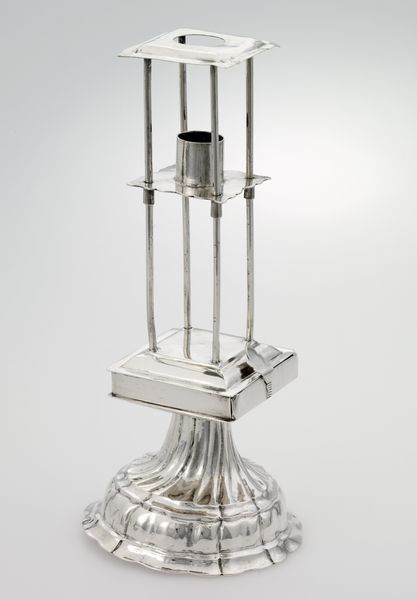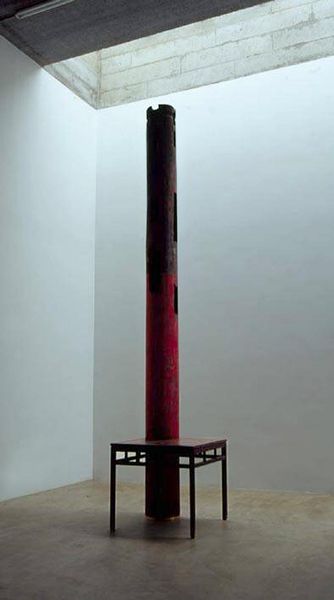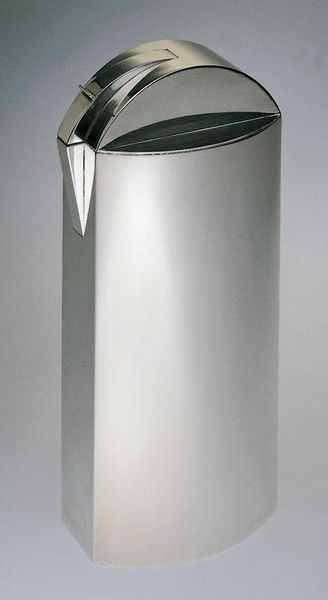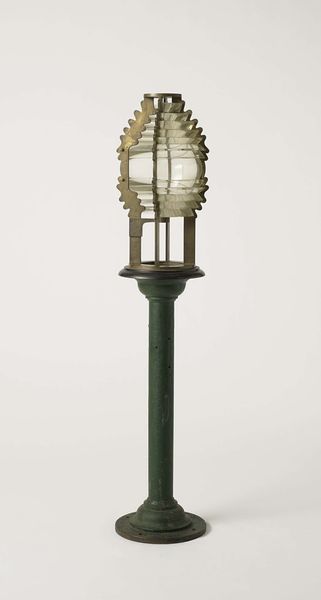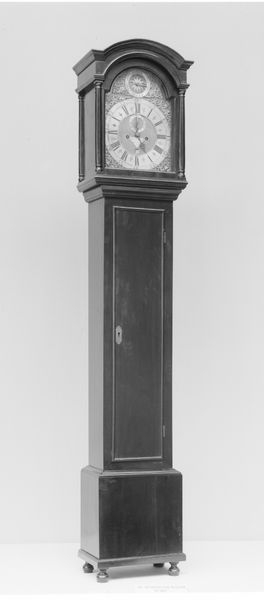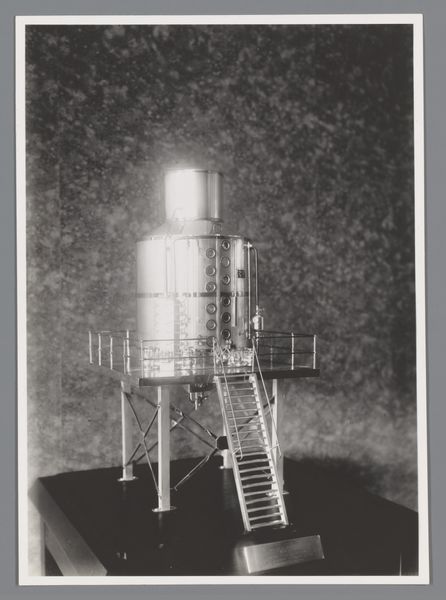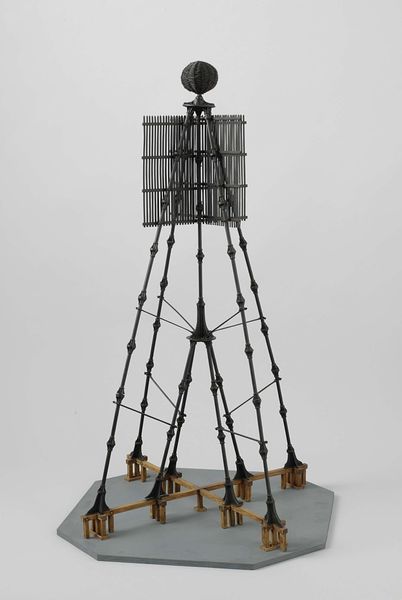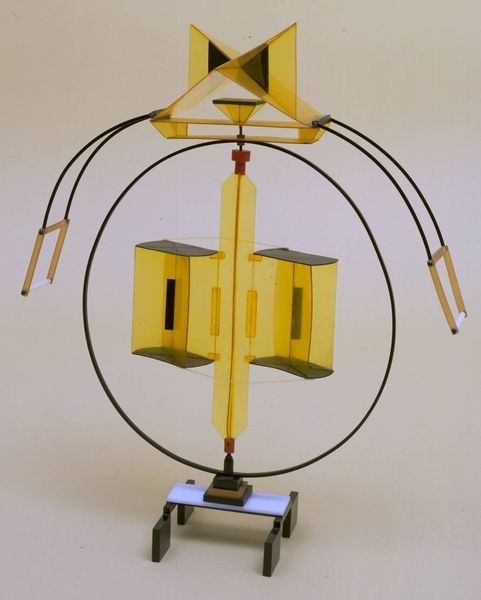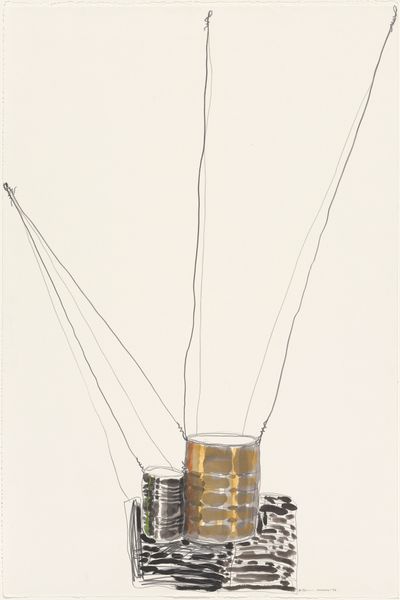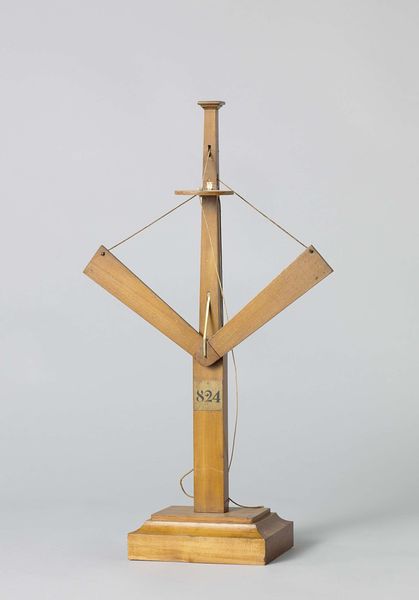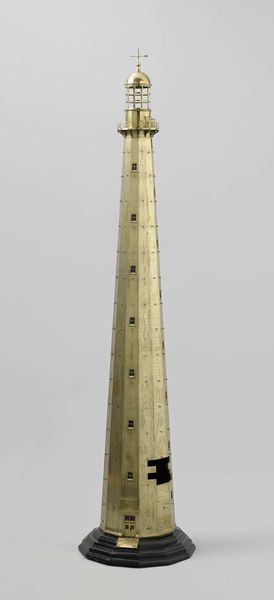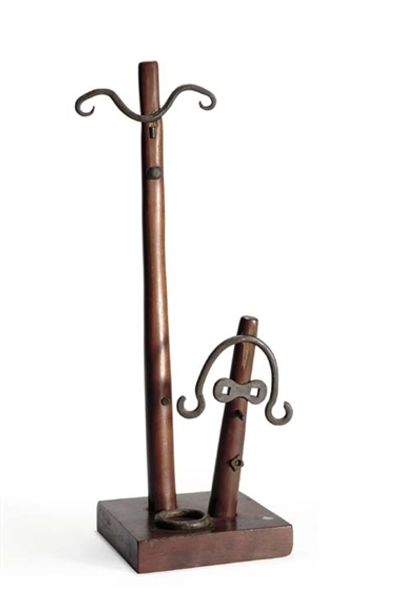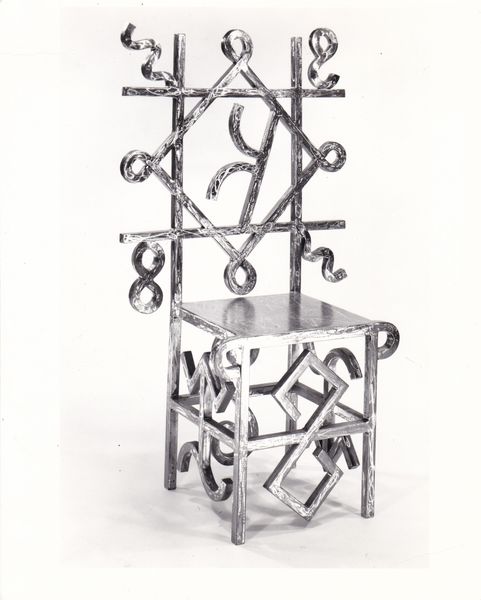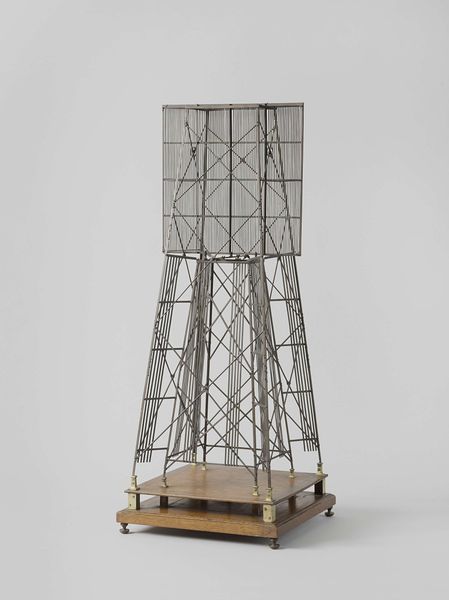
Copyright: George Rickey,Fair Use
Curator: George Rickey's "Two Open Rectangles, Excentric, Variation VI" from 1976, stands before us, a kinetic sculpture that truly marries art and engineering. I am curious, what’s your initial read on this piece? Editor: It strikes me as strangely unsettling, almost like a skeletal doorway that's perpetually off-kilter. There's an inherent tension in the asymmetry and the precarious balance it implies. Curator: Precisely! Rickey's work isn't just about the movement itself, but the poised stillness within the potential for movement. The use of metal contributes to that sense, wouldn't you say? Editor: Absolutely. Metal, historically associated with industry and power, here becomes a medium for reflecting fragility. The open rectangles, how do they operate within our reading of this artwork? Curator: I like to imagine them as sails catching unseen winds, mirroring the constant flux of experience. There's something deeply meditative about witnessing their gentle, unpredictable dance. Almost hypnotic... Editor: Perhaps it's not so gentle. Consider the era: 1976, post-Vietnam War, amidst Cold War anxieties. These excentric rectangles could symbolize societal instability, structures on the verge of collapse, responding to forces beyond their control. The angles become unsettling within the sculpture, destabilizing it from the ground up. Curator: A compelling reading. It challenges the clean lines and seemingly simple geometries that can define so many interpretations. Do you find a reflection on identity and politics with these interpretations of geometric instability? Editor: Geometric abstraction, as a mode, had a profound political valence in the 20th century. Kazimir Malevich or the Bauhaus experimented with form as a way to reconstruct society according to socialist principles, while De Stijl aimed to create harmony between humanity and industrialization through its minimalist vision. I think Rickey uses these artistic languages of geometry to expose a deep-rooted precarity beneath their harmonious appearances. Curator: It is fascinating to witness how art from geometry might give us these emotional interpretations, these destabilizations, making us reflect on them, and destabilizing also the artwork that is a symbol on harmony and stability for others. Editor: It seems to have this conversation ingrained in it and in us all, curator. Curator: Indeed. Thanks, for joining me for this exploration!
Comments
No comments
Be the first to comment and join the conversation on the ultimate creative platform.
